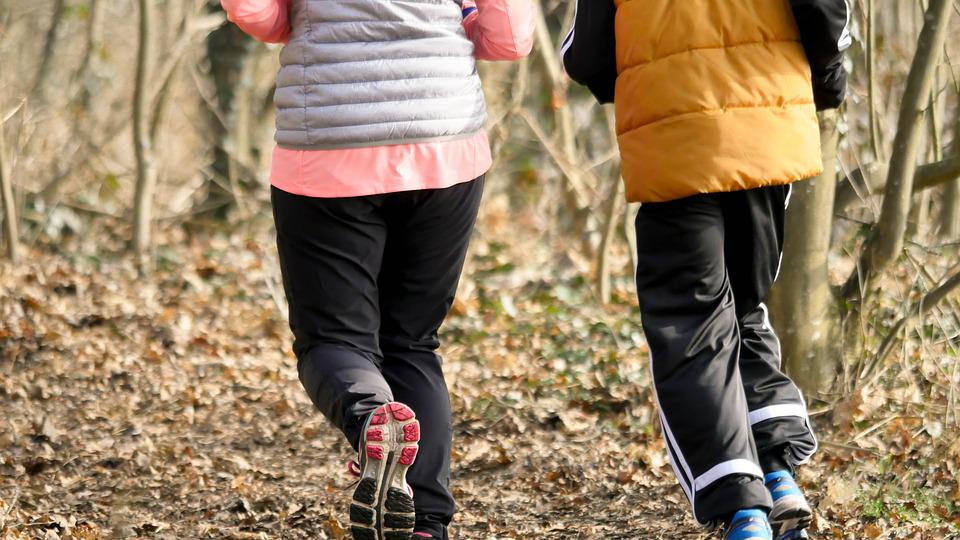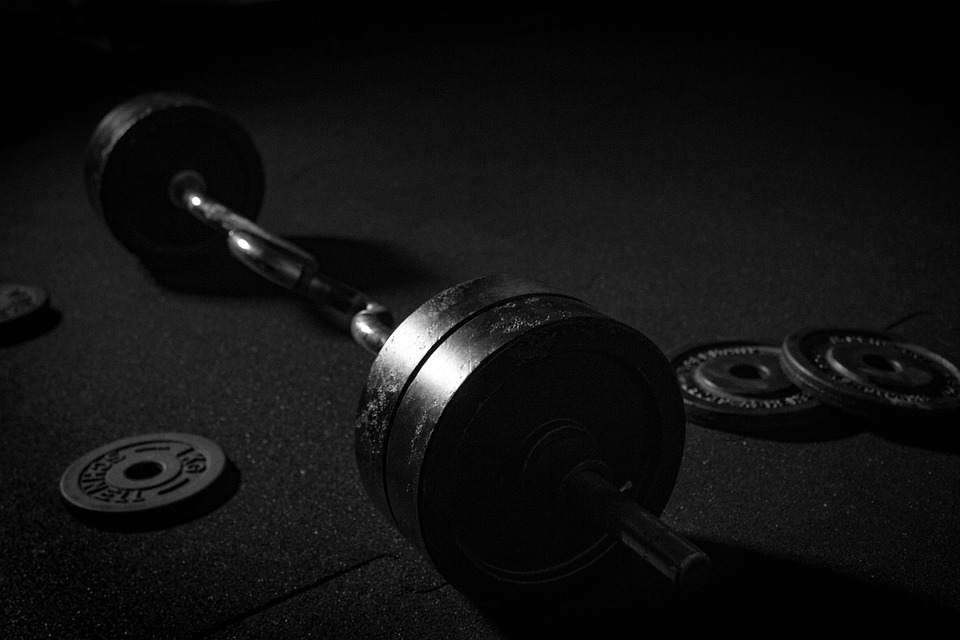
Exercise has a plethora of benefits that can improve your quality of life as you age. It can help with weight management, increase energy levels, and possibly even lessen the effects of aging. Additionally, exercise can benefit your brain and emotional state. If you want to maintain your current weight or feel more healthy overall, there are many ways to stay active after age 50.
A few good reasons to stay active
Increased energy levels and strength
Working out has a whole host of benefits that extend beyond weight loss. In addition to helping you shed pounds, exercise can also lead to increased muscle and bone mass, a healthier heart, more energy and a stronger body overall.
Prevent illnesses and diseases
Regular exercise has been linked to a reduced risk or delayed development of many illnesses and diseases, as well as providing benefits for those with chronic conditions, including:
- Heart disease and stroke
- Joint and muscle pain
- Type 2 diabetes
- Alzheimer’s
- Lung cancer
- Colon cancer
- Osteoporosis
- Arthritis
- High blood pressure
- Breast cancer
- Cholesterol
Findings showed that being in good shape can lead to a longer life and a later onset of diseases. The fittest people usually only develop chronic conditions during the last 5 years of their life, as opposed to the last 10, 15, or 20 years.
Minimize the symptoms of chronic conditions
Exercise can help with some of the symptoms of chronic conditions or conditions associated with aging. These include:
- Menopause symptoms
- Joint pain
- Weight gain
- Lowered immune function
- Poor digestion
Stay independent
Exercising regularly can help improve your strength and flexibility, which can in turn help you maintain coordination and balance. Staying physicallyfit can help you stay mobile and independent for longer periods of time.
Quality of life
Good health allows you to live your life to the fullest by reducing the risk of diseases, minimizing the symptoms of chronic conditions, and retaining your independence.
Boost brain and emotional health
Exercise is beneficial for stress relief and cognitive function due to the release of endorphins and increased blood flow to the brain.
Improve the quality of sleep
The quality of your sleep can be improved by up to 65% by simply doing 150 minutes of moderate to vigorous activity per week.
Maintain a healthy weight range
As you age, your metabolism slows down. Staying active and fit can help you maintain a healthy weight, which is good for your health. Being overweight is linked with a higher risk of developing chronic health problems.
Tips for exercising in your 50s and beyond
It’s never too late
Although many people starting exercising in middle age believe that they will not be able to see real benefits, studies have shown that this is not the case. In fact, it is never too late to start seeing the benefits of exercise. One study in particular showed that even nursing home residents in their 80s and 90s who were confined to wheelchairs were able to see improvements in their strength and overall functional ability from a weight-lifting exercise program.
Fitness experts say that even if you have spent most of your life out of shape, it is possible to get into the best shape of your life after the age of fifty.
Keep a regular routine
Most people should aim to do some form of moderate-intensity aerobic activity every day, like brisk walking, and some form of muscle-strengthening activity, like weightlifting, at least two days a week. The amount of exercise you should do varies depending on your fitness level and health, your fitness goals, and any health conditions you have. Most people should do some moderate-intensity aerobic activity every day, like brisk walking, and some muscle-strengthening activity, like weightlifting, at least two days a week.
If you do 150 minutes of moderate aerobic activity or 75 minutes of vigorous aerobic activity each week, it can have great benefits for your health. Each session should last at least 10 minutes.
Make it well-rounded
According to experts, a successful fitness routine covers three bases: aerobic activity, strength training, and stretching.
- Aerobic activity – Aim for at least three or four 20-minute sessions of aerobic exercise each week, whether it’s jogging, walking, swimming, dancing, or some other type of activity that gets your heart pumping.
- Strength training – Strength training helps you retain or build muscle density and reduce the risk of back injury. Start with hand weights and do eight easy repetitions and build up to 12 reps. This will help you both build strength and strengthen your posture.
- Stretching – Incorporate stretching and warm-ups into your routine to build joint flexibility and reduce the risk of injury or strain. Try yoga, tai chi, or pilates movements as safe stretching exercises for standalone or pre-workout warm-up.
Keep it varied
If your usual workout routine is starting to feel repetitive, mix things up a bit. Some people think that they should only do exercises designed for older adults, but as long as you can safely do more intense activities, go for it. This could include an aerobics class, biking, swimming, or dancing.
Additional forms of physical activity may include gardening, car washing, hiking, golf, cricket, climbing stairs, or taking your dog for an energetic walk. Always consult your physician if you have any questions about what you can safely do.
Take it easy at the start
If you’re out of shape, it can be easy to feel discouraged at the start. Start out by setting small, achievable goals, like walking for 20–30 minutes most days of the week. Then, gradually incorporate more exercise into your week. experts suggest that even a ‘small dose of exercise’ can have a big impact on your overall health.
Challenge yourself
If you find that your workouts are becoming too comfortable, it might be time to increase the intensity. A study found that the group of 60- to 70-year-olds who had the most intense workouts experienced the strongest benefits. To keep your workouts challenging, try increasing the number of sets or reps or finding a slightly more rigorous way to get your heart pumping.
Stay alert to problems
If you are new to exercise or have a chronic condition, it is important to take things slowly to avoid pain or injury. If you are taking medication, it is best to speak with your doctor before starting a new fitness program.
If you’re struggling with age-related issues like back pain, joint problems, arthritis, and osteoporosis, it’s worth talking to your doctor about how you can safely stay active. In many cases, you can still exercise even with a chronic condition—though you may experience some muscle soreness when starting out. Exercise has benefits for all of these conditions, such as improving muscle strength or density.
Track your heart rate
To make sure your routines are effective, try tracking your target heart rate. This will help you gauge if your workouts are too easy or too intense.
Your maximum heart rate per minute can be calculated by subtracting your age from 220.
During moderate physical activity, your heart rate will be 50 to 70 percent of your maximum heart rate. During vigorous exercise, your heart rate will be 70 to 85 percent of your maximum heart rate.
You can use the conversation rule to check whether your exercise is too vigorous.
If you are moderatey exercising, you should be able to breathe and still carry on a conversation. This should be able to last for at least 30 minutes. Once you progress to vigorous exercise, you will notice it is harder to talk in full sentences as you will be breathing heavier.
If you have any concerns about your medications or heart rate during exercise, be sure to consult your doctor.
What kind of exercise should you do after age 50?
If you have never had a consistent exercise routine, Elizabeth Gardner, MD, a Yale Medicine orthopedic surgeon who specializes in sports medicine, recommends starting with a combination of aerobic exercise and light weight training. This gives your body a chance to get familiar with the different types of physical stress induced by exercise.
To find what type of aerobic exercises you enjoy the most, Dr. Gardner suggests experimenting with different activities, such as walking, hiking, biking, dancing, and swimming, during the beginning stages.
“It is also important to include balance exercises, which can help to prevent falls in the future,” Dr. Gardner stresses. “When getting started, it is important to use a chair for support, but with time it may be possible to do [balance] exercises without a chair.”
Many great balance exercises can be performed at home, including:
- Marching in place
- Standing on one foot
- Shifting your weight from one leg to another
Stretching and mobility exercises are important to include alongside yoga, Pilates, and tai chi, in order to improve flexibility and joint range of motion. These exercises are excellent for building strength and developing balance to prevent falls.
According to Nicholas Rizzo, a personal trainer, biologist, and fitness research director at RunRepeat, after you’ve established a solid foundation of aerobic cardio, stretching, and balance exercises, you can start to incorporate resistance training into your workout routine. Begin with lighter weights and higher reps, making sure to take ample rest between sets. Put off more intense anaerobic interval workouts until you’re physically fit enough and comfortable enough with your form to move quickly.
How to start exercising at age 50 or older
First things first: See your doctor, Dr. Gardner says.
“When anyone first starts exercising, it is important to first assess your physical fitness,” Dr. Gardner tells CNET. “While there is almost no absolute contraindication to exercise, certain medical or physical conditions may require certain adjustments to an exercise routine.”
Your physician may want to make certain adjustments to your exercise routine. Dr. Gardner offers some examples:
- For patients with osteoporosis, impact exercise (with caution) and weight training are important, because these types of exercise can help to build bone mass and slow degeneration.
- For patients with arthritis, impact exercise can be bothersome to the joints, so physicians will typically recommend low-impact cardiovascular exercises, such as swimming or biking.
- Patients with uncontrolled high blood pressure (higher than 180/110 mmHg) should avoid heavy weightlifting until they’ve received clearance from their doctor.
According to Dr. Gardner, after getting the OK from your doctor, it is time to have some fun by starting with activities that are familiar and enjoyable, such as taking a walk or a bicycle ride.
“The goal is to build a habit and be able to gradually increase your activity over time,” Dr. Gardner says. “If lifting weights, start with weights that you can perform 10-12 repetitions of at first. You don’t want to be so sore after the first outing that you can’t move for a week.”
How often should you exercise after age 50?
Dr. Gardner says that all adults should strive to exercise for 150 to 300 minutes each week, with 150 minutes being for intense or vigorous exercise and 300 minutes being for moderate exercise.
“This time can be split up into sessions on different days,” Dr. Gardner says, “[but] really the goal should be to move, even if just for 10 to 15 minutes every day.”
Start with 5-10 minutes of light exercise per day and gradually increase to 20-30 minutes. Focus on light cardio, bodyweight exercises, and stretching.
Rizzo suggests that you start by only doing one or two full workouts, in addition to increasing your daily movement. When you’re ready to add another full workout, only do it at 50% intensity. Keep increasing the intensity until you can do all of your weekly workouts at 70 to 90% effort.
Exercises to avoid
There are no activities that are off bounds to those over 50, however there are some exercises you might want to think twice about integrating into your program, such as leg extension machine workouts, pull-downs or pull-ups behind the head, and plyometric or jump-training movements.
Running quickly and lifting heavy objects can both lead to injuries.
There are many risks associated with exercising, such as injury from doing an improper exercise or not seeing results from not exercising enough. However, the biggest challenge seniors face when it comes to exercising is usually self-imposed limitations, such as not having enough time or feeling like they’re not fit enough. To avoid risks, talk to your doctor before starting any new exercise routine, and look for trainers who have experience working with seniors. Remember that even small amounts of exercise can make a big difference.














